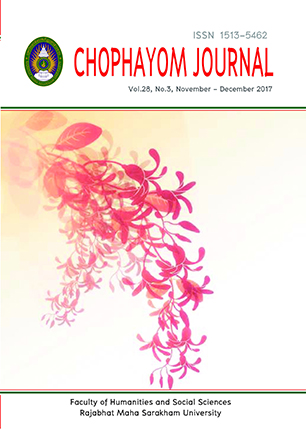The Conflicts between the Government Sector and People: A Case Study of the 1974 arson at Ban Nasai in Nasing Sub-district, Srivilai District, Bung Kan Province
Keywords:
Conflicts, Government Sector and PeopleAbstract
Abstract
This qualitative study was conducted to investigate: 1) the arson incident in 1974 at Ban Nasai, Tambon Na Singh, Amphoe Srivilai, Bung Kan province; 2) the key factors led to the conflict between the government and the local people; and 3) the consequences after the reinforcement of the anti-communism suppression measure at Ban Nasai within the Phu Singh Operation Area 222. The data was collected from the previous
research papers and the interview with the participants. Also, the literature review was used to construct the research framework and the descriptive analysis was performed to explain the arson incident. The outcome was found as follows. 1. The 1974 arson incident at Ban Nasai indicated there was really the consequence after the careless operation. Those officers were unable to differentiate between normal people and the communist, so they mistakenly burned down the whole village and killed innocent people. This excessive action of the officers was claimed as the communism suppression measure. 2. The key factors that led to the conflict between the government sector and people and over the arson incident at Ban Nasai and resulted as the political conflict were attitudes, behavior, and objectives. That is, the conflict started since these three factors did not go along each other. Hence, the conflict grew and reached its peak in which the existence of one side finally became an obstruction for the success of another side. 3. The communism suppression measure reinforced at Ban Nasai entails several negative consequences including: 1) loss of life and property; 2) repeated fighting and spreading violence; and 3) disharmony. Eventually, the people decided to leave the village join a group of the communist settled in the wood. Keywords: Conflicts, Government Sector and People.






